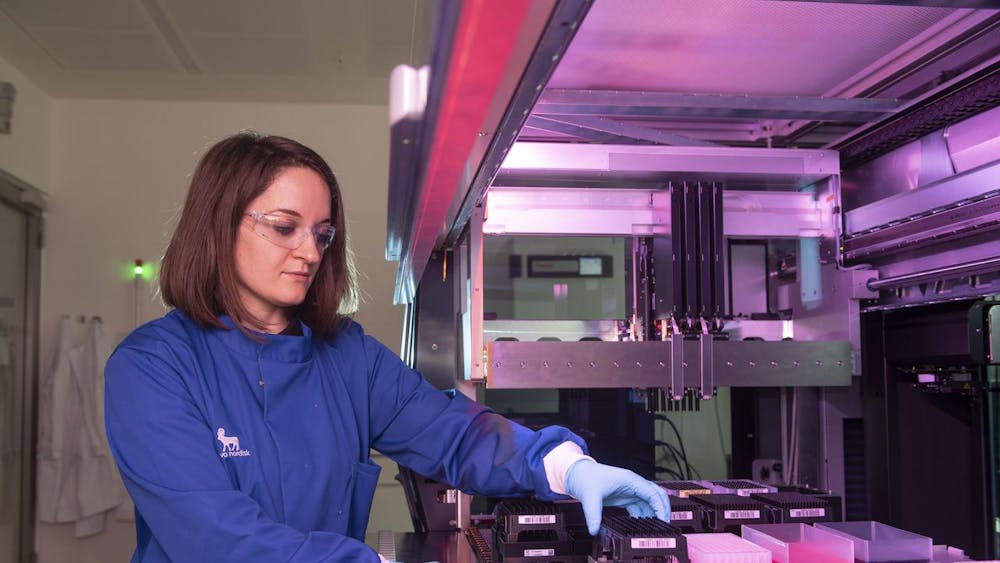The Food and Drug Administration recently passed a law that requires food labels to list ingredients made from proteins of the eight major foods that cause allergic reactions. These foods include milk, eggs, fish, crustaceans, wheat, tree nuts, soybeans and peanuts. \nAccording to the FDA, as many as 11 million people - 2 percent of adults and 5 percent of young children -- suffer from food allergies. Each year, about 30,000 people require emergency room treatment for food allergies, and an estimated 150 die.\nSenior Beth Bilkiss was diagnosed with the disease during spring last year when she was 20. Prior to her diagnosis, she had never heard of the disease. Now she is forced to look at foods differently, as something that can kill her.\n"I showed symptoms since I was about 12 or 13 years old but was misdiagnosed for eight years. Doctors told me I was lactose intolerant or that I had irritable bowel syndrome. I kept getting sicker and sicker and losing more weight," Bilkiss said. "My symptoms were a constant upset stomach pretty much after every meal, and my intestines hurt so much that I was in and out of the hospital due to the sharp pain in my lower abdomen." \nAt times, Bilkiss said she could hardly sit up after eating. Instead, she would curl up in bed and cry. She constantly missed class because she was so sick. \nMany restaurants have also begun to cater their menus toward individuals who suffer from celiac disease, a lifelong autoimmune intestinal disorder.\nAccording to the Celiac Disease Foundation, the disorder results from a toxic reaction after gluten is ingested. This reaction damages the mucosal surface of the small intestine and interferes with the absorption of nutrients. \nGluten is a protein found in specific cereal grains, harmful to persons with celiac disease. It is specifically found in all forms of wheat (durum, semolina, spelt, kamut, einkorn, and faro), and related grains such as rye, barley, and triticale.\nThe cause of celiac disease is unknown. According to the CDF, it is a genetic disorder associated with a group of genes on Chromosome 6. These genes regulate the body's immune response to the gluten protein fractions.\nThe Foundation states that the disease affects one out of 133 people in the United States.\nThe disease may appear at any time in a person's life and can be triggered by surgery, viral infection, severe emotional stress, pregnancy or childbirth. Symptoms vary, but include abdominal cramping, intestinal gas, distention and bloating, chronic diarrhea or constipation, fatty stools, anemia, weight loss with large appetite, and weight gain.\nA person can be diagnosed through an antibody blood test. According to the CDF, a small bowel biopsy should be done to confirm the diagnosis and determine the degree of mucosal damage.\n"I did not know this back then, but my bruising, weight loss, and migraine headaches were all linked to my disease," Bilkiss said.\nTreatment for celiac disease sounds simple: Remove all gluten from your diet indefinitely and the small intestine can begin to heal. However, gluten is not easily identified.\nBilkiss is from Newport Beach, Calif., and had a difficult time dealing with her situation being so far away from home.\n"I lived in a sorority house my junior year and the cooks were so helpful. They would prepare plain chicken for me with nothing on it and I would have salad with just balsamic vinaigrette on it," Bilkiss said. "My family would research the disease and buy books to learn as much as they could."\nAlthough the disease can be stressful to endure, Bilkiss doesn't let it interfere with trying to live a normal life. She may be limited to the foods she can eat, but it doesn't stop her from going out to eat.\n"I usually order a burger or chicken sandwich and tell them to hold the bun or bread. I have to stay away from any sauces so I have learned to add spices to my food instead. I have to be very careful of contamination. That's when just a crumb gets on my food," Bilkiss said. "Even one crumb will make me sick, so I have to be very careful about that as well."\nShe has found many gluten-free products and alternative grains, but admits that some foods just don't compare to the real thing. \n"I really miss pizza and just bread and butter," she said. "I have found pasta alternatives and bread alternatives, but I really miss a good deep dish pizza!"\nBilkiss doesn't like having to eat the way she does, but understands that she doesn't have a choice.\n"I just really hope that doctors will learn to better diagnose this disease. Several people are walking around with it and don't even know. It has drastically changed my life," Bilkiss said. "My only fear in life is that infertility is a cause of the disease. Since I went so long being undiagnosed there is a large possibility that I will not be able to have children. I don't want that to happen to other people so I do as much as I can to educate people about it"
Student copes with rare disease
Gluten causes toxic reaction in small intestine
Get stories like this in your inbox
Subscribe





